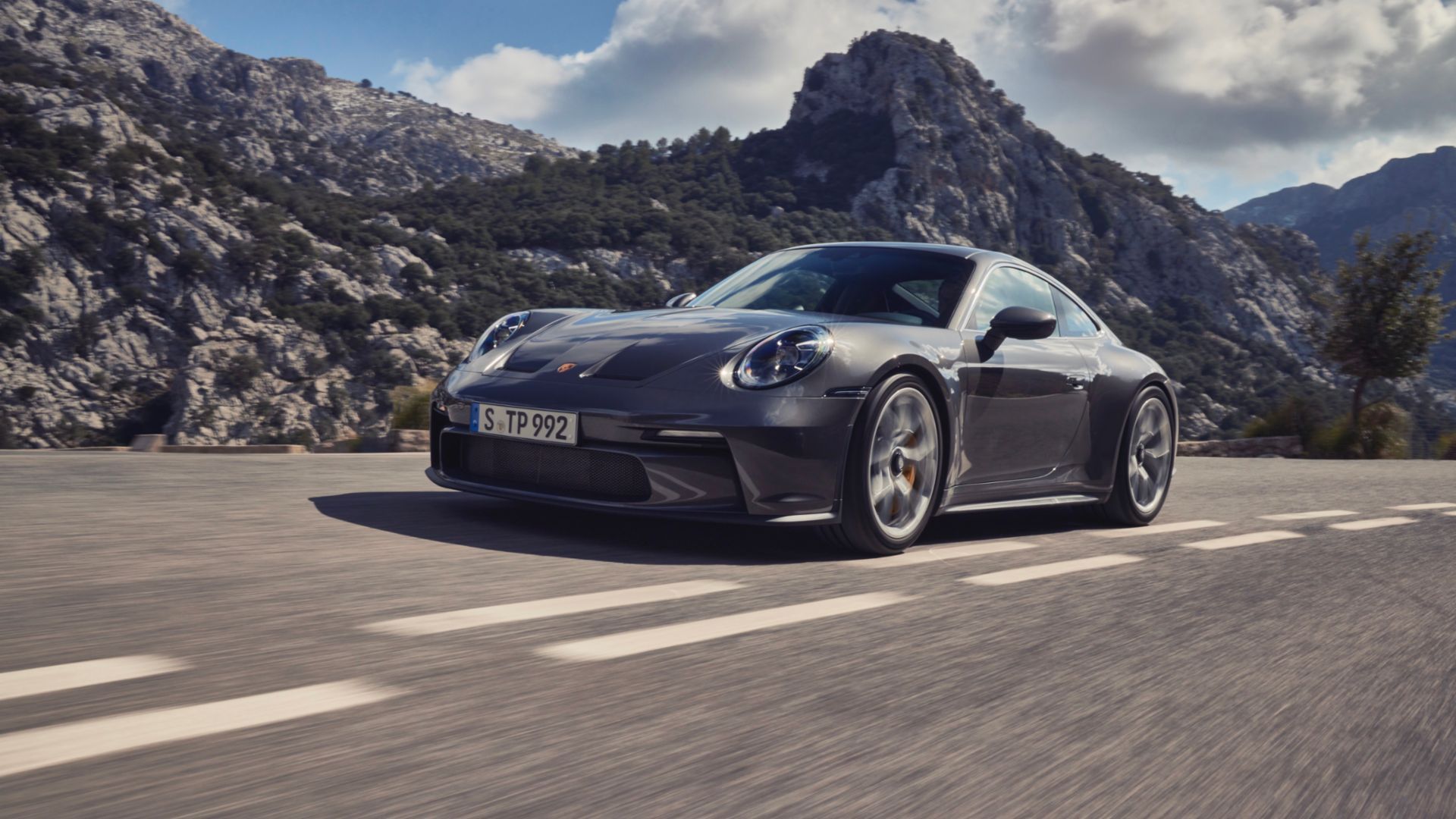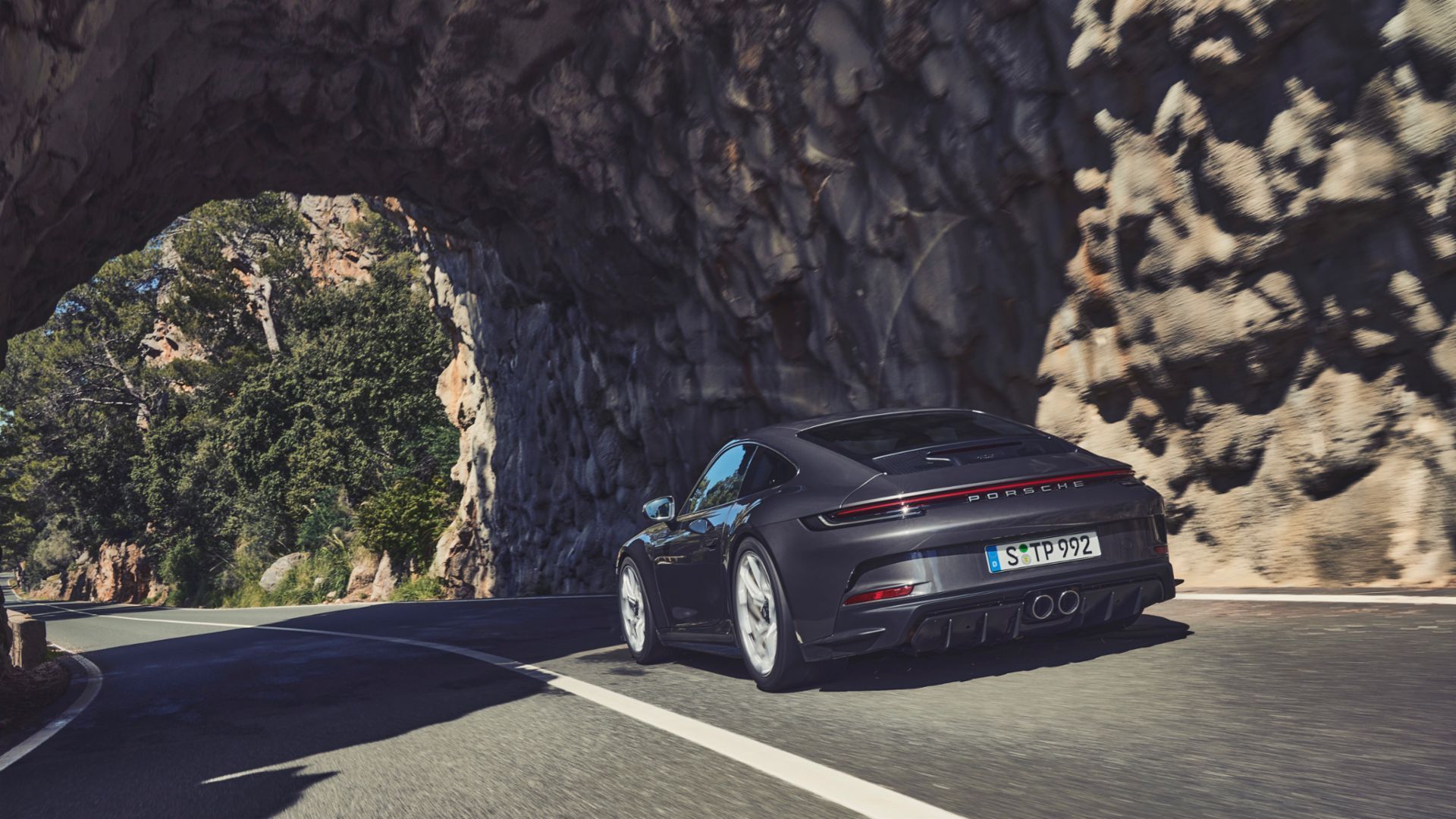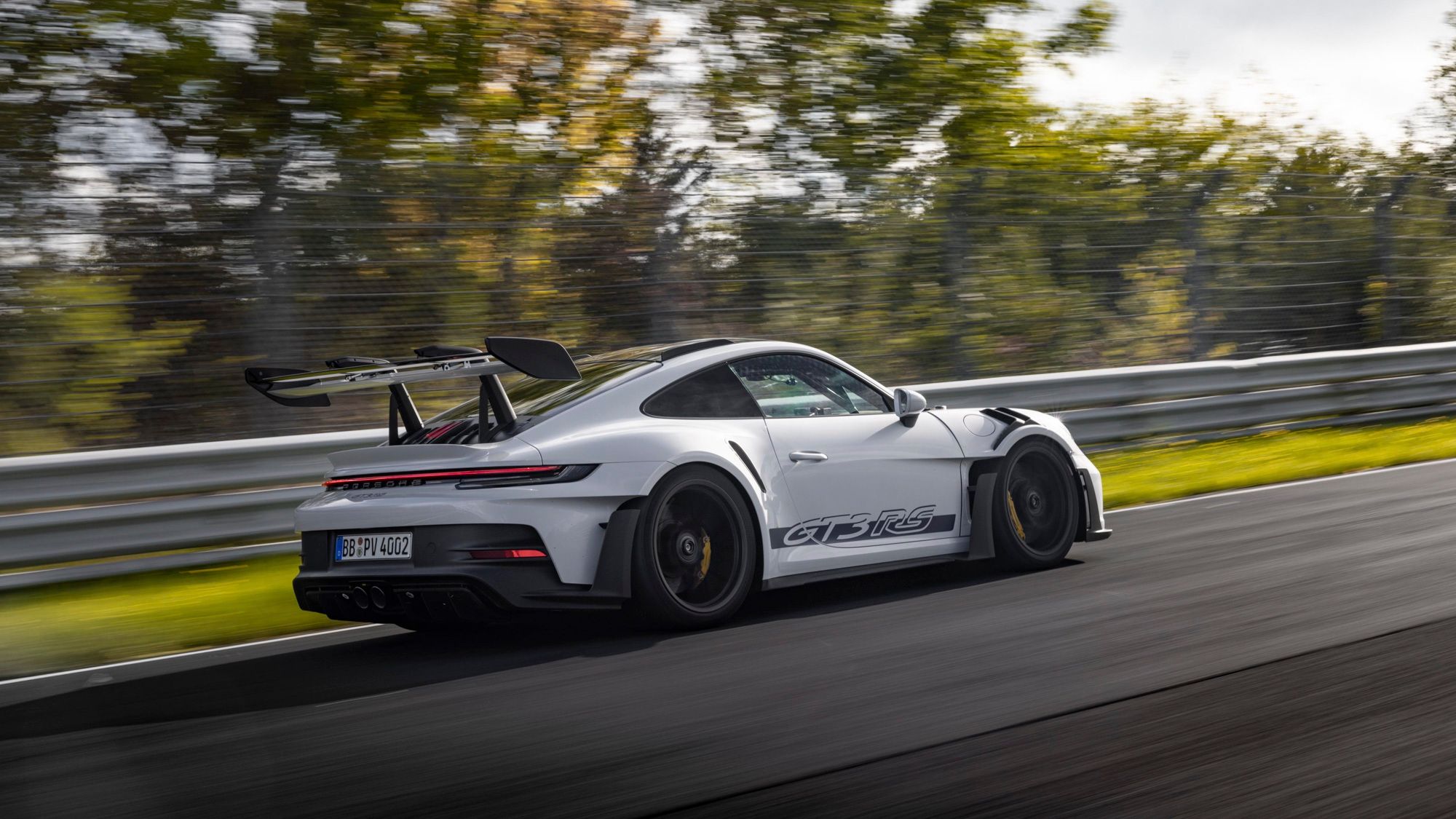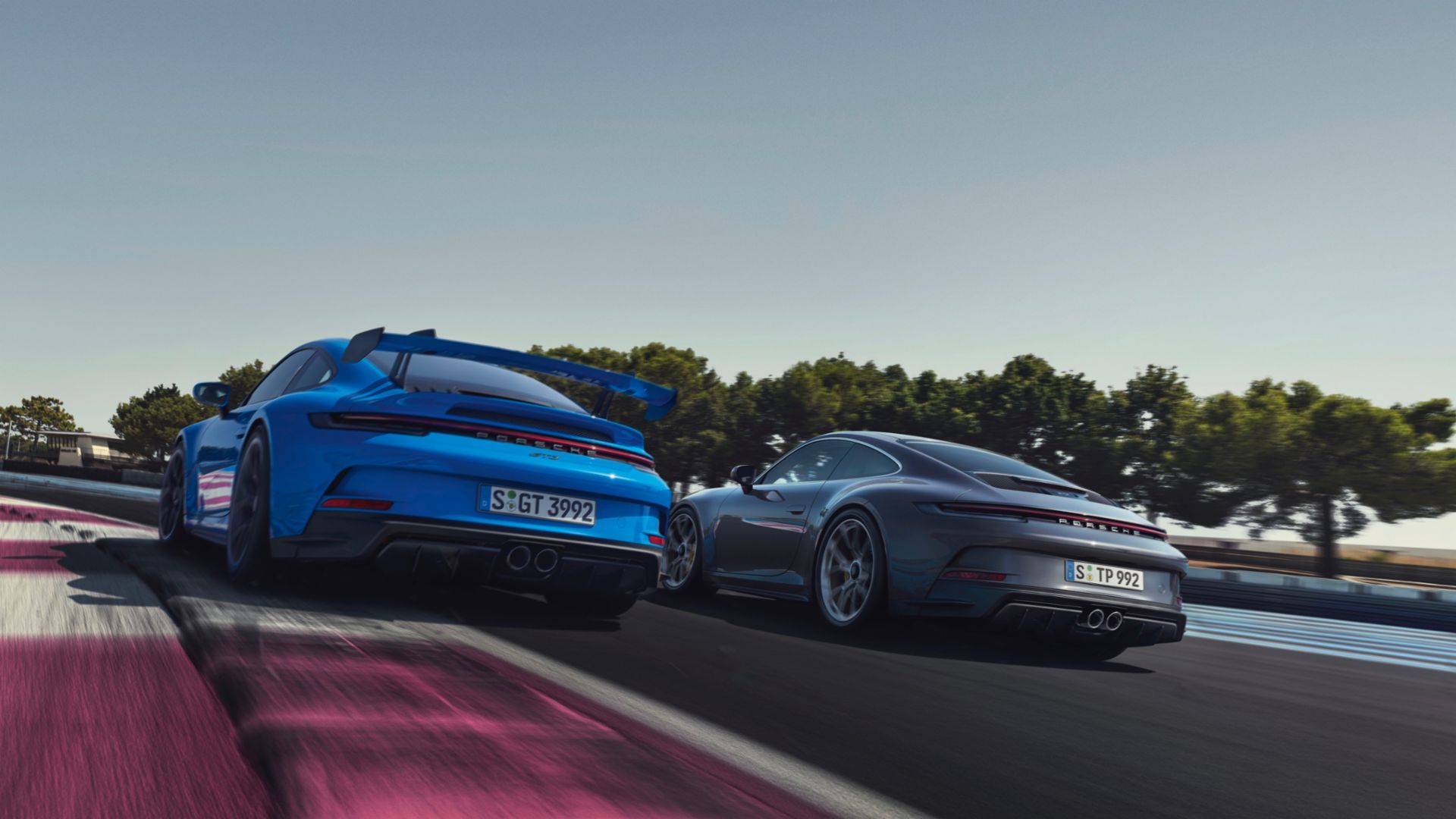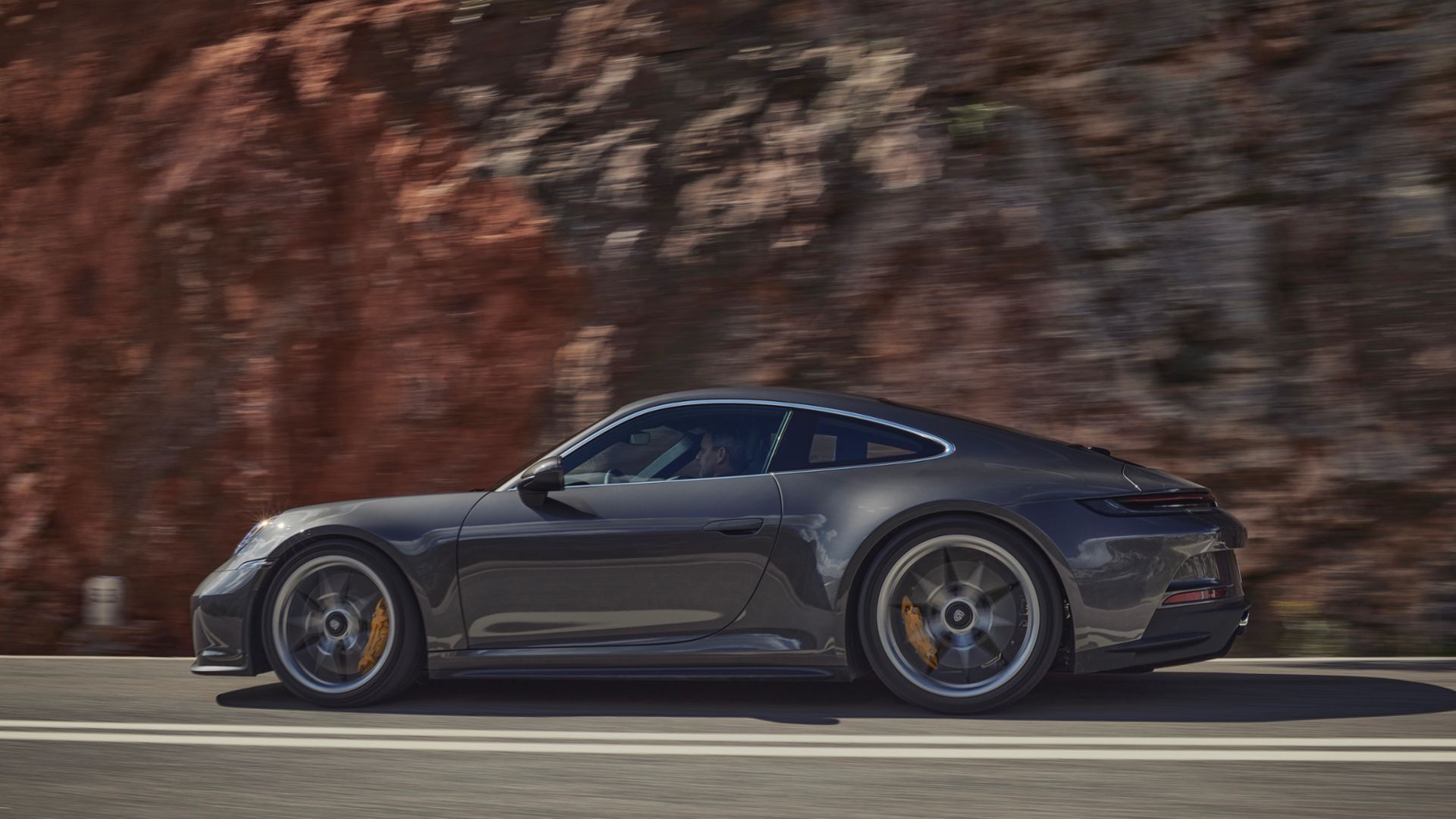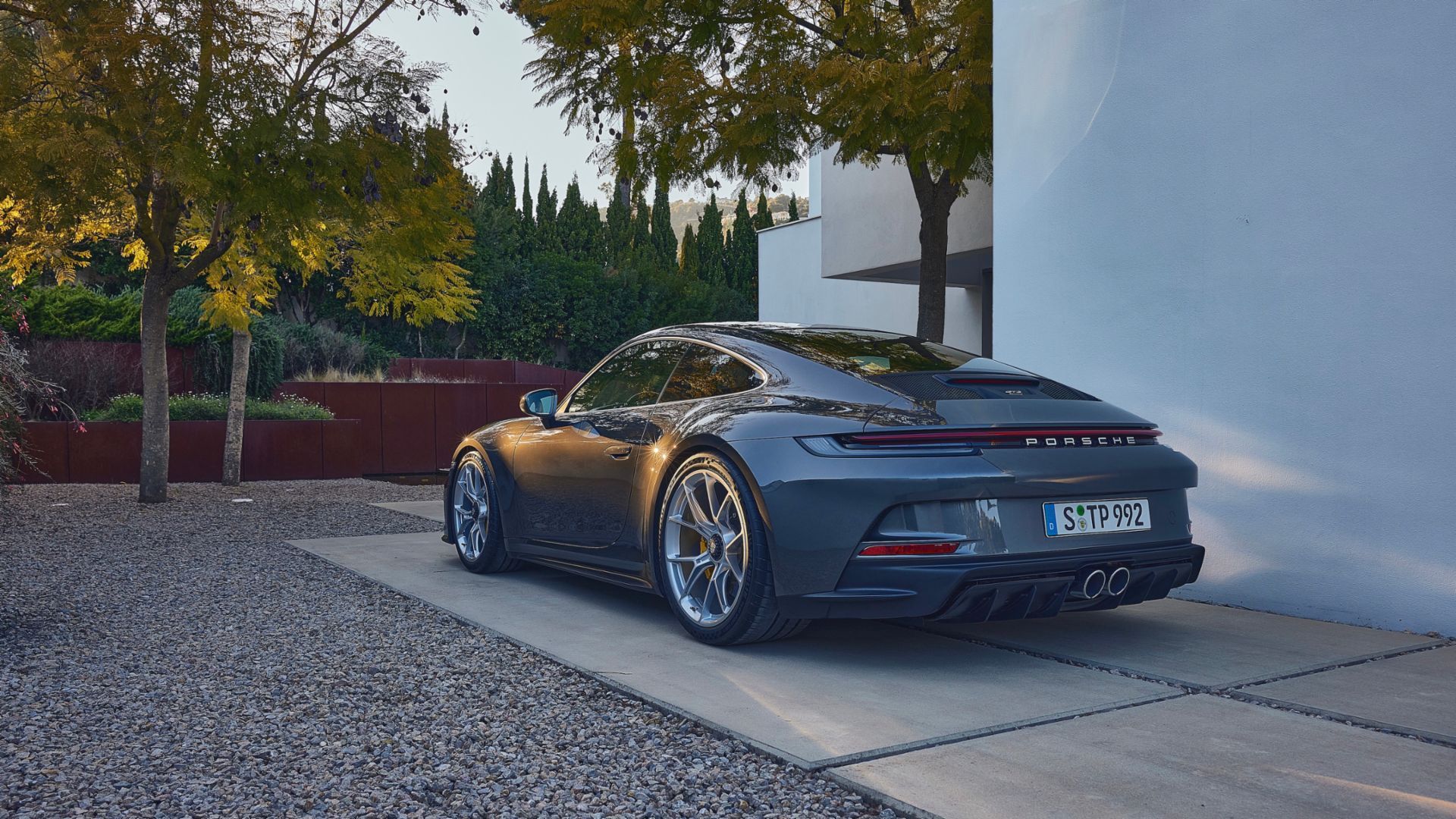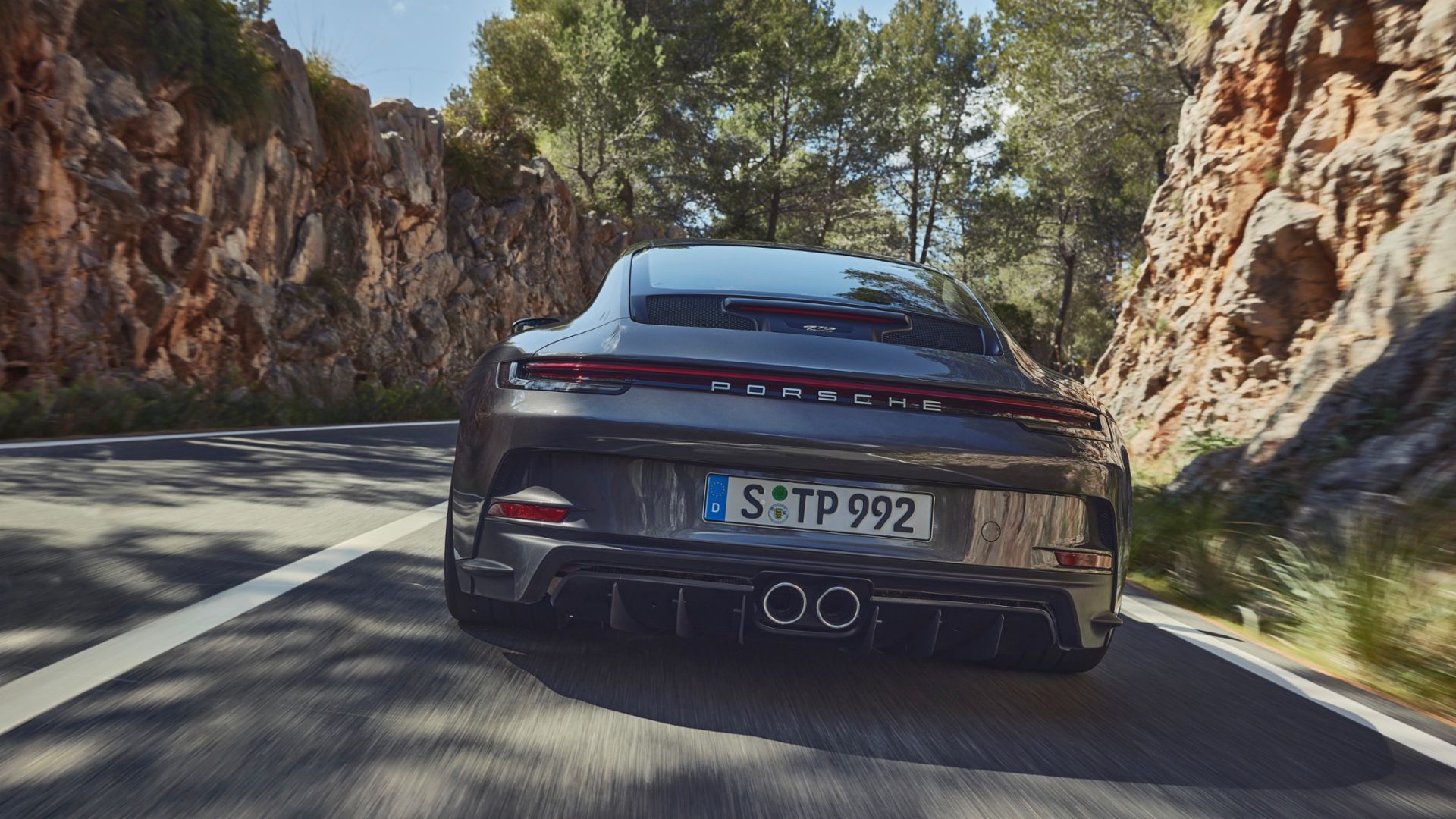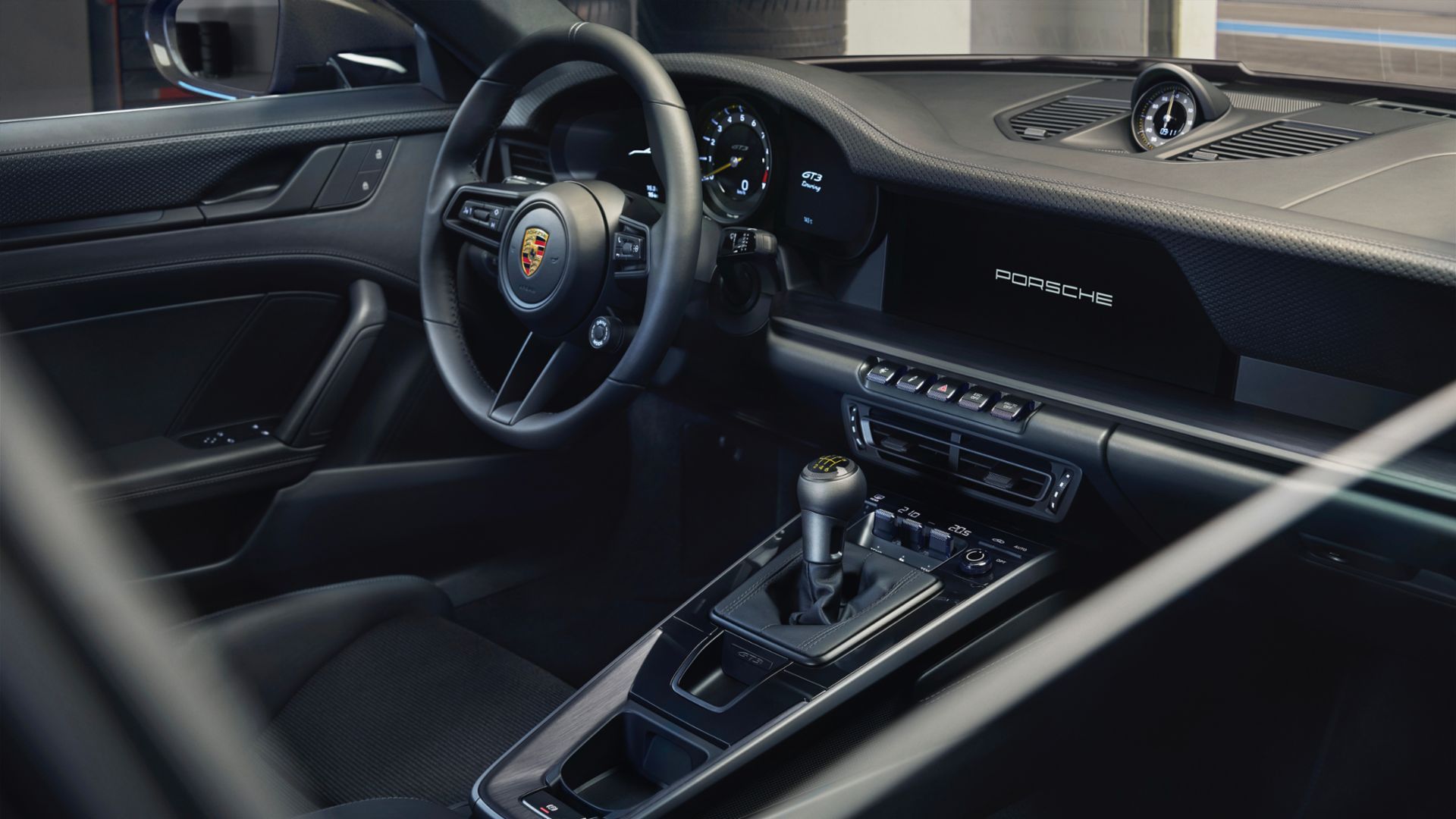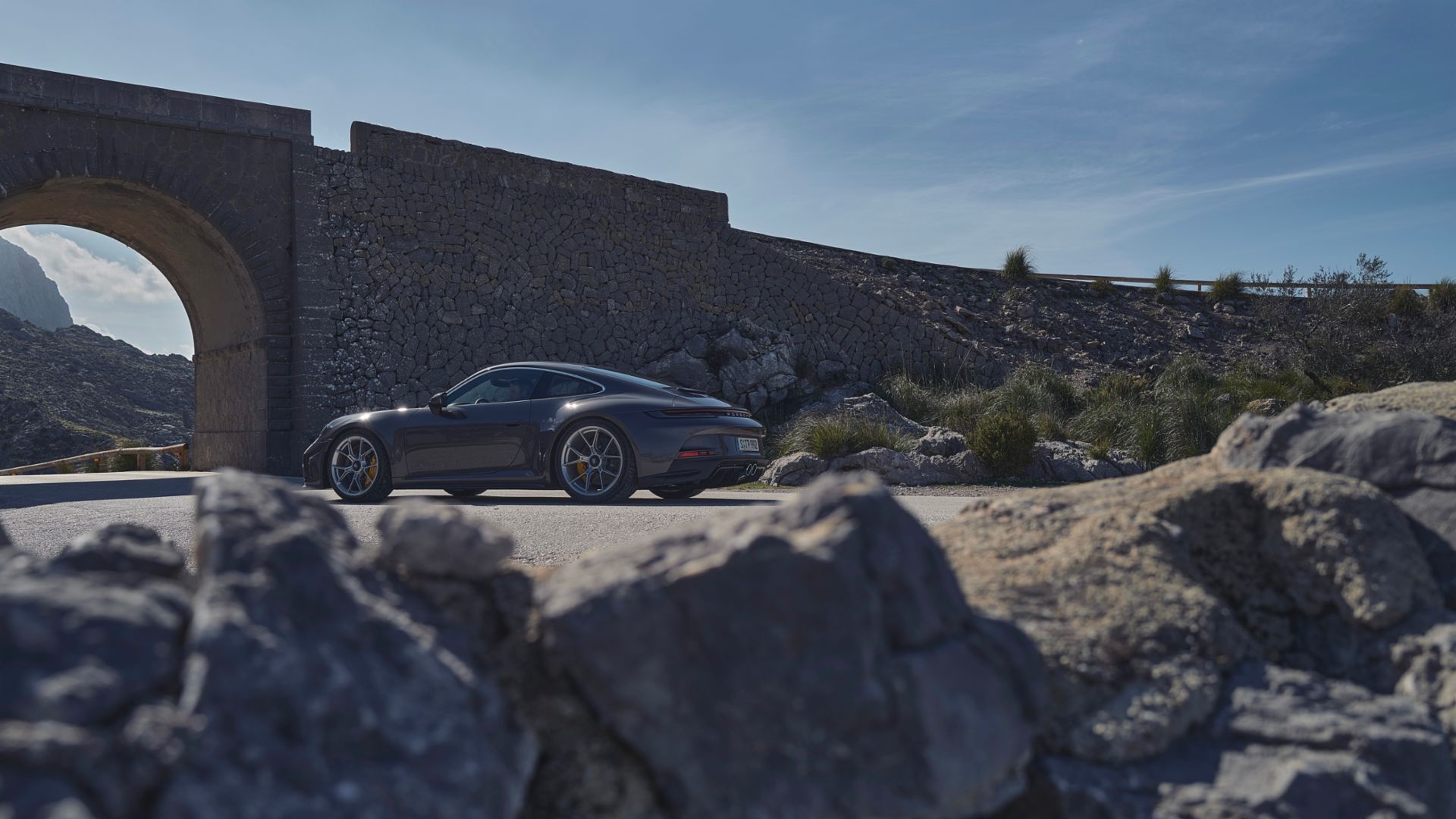The 2023 Porsche 911 GT3 and GT3 RS are pure perfection, merging everything we enjoy about the standard 911 with otherworldly performance, driving satisfaction, and hot-lap ability. The GT3 and GT3 Touring’s naturally-aspirated 4.0-liter flat-six engine roars to 9,000 rpm, creating 502 horsepower. The GT3 RS’s 518 horsepower is generated by the same engine, but its major technical improvements are its wild race-car aerodynamic components, which are inspired by GT and Formula 1 race automobiles. So, let's take a look at 10 reasons why the GT3 is such a highly-rated sports car.
1 A Flat-Six That Won’t Quit
Porsche refuses to let go of its flat-six naturally aspirated 4.0-liter engine, and for good reason. Try to find another engine that offers more than 500 horsepower using no forced induction and no electric motor to aid it. The flat-six in the GT3 features 502 horsepower and 346 pound-feet of torque in the standard trim or Touring model. The same engine produces 518 horsepower in the RS version. Perhaps most impressive is the rev limit of 9,000 rpm. The GT3 RS has a top speed of 199 miles per hour and you can achieve 0-60 miles per hour in just 2.7 seconds. That’s about how long it takes to get bucked off a bull named Fu Man Chu.
2 The 911 GT3 Is An Ultimate Touring Car
There is no rear wing on the GT3 Touring to distinguish it from the more flamboyant model. At 49 mph, a rear spoiler automatically extends to provide downforce on the Touring. Even without the huge rear wing, the top speed of the Touring with a PDK automatic transmission is said to be 198 mph, while a manual transmission achieves 199 mph. Other aero items are the same across the two cars, such as the paneled underbody and the rear diffuser. The GT3's black trim is replaced by silver window frames on the Touring in addition to a body-colored front grille. Sure, the Touring GT3 sounds as wonderful as the naturally aspirated flat-six cylinders of the 911 GT3, but you want to turn down the volume. Otherwise, you get the same sound and fury in a (slightly) more subtle package for the same price.
3 The 911 GT3 RS' Aero Prowess
The 2023 911 GT3 RS makes 518 horsepower, making it the second most powerful naturally aspirated 911—an improvement of just five horsepower over the GT3. The Porsche engineers weren't as interested in producing a vehicle with a lot of power as they were in controlling the flow of air around the engine. Performance is gauged by how efficiently the body moves through the atmosphere, not by how fast the engine consumes it. Every body panel is unique on the RS, including the doors, which are composed of carbon fiber. The scooping, shunting, splitting, and spoiling of air around the body is responsible for much of the vehicle's aerodynamic performance. As a consequence, the aero upgrades appear to be the work of an unlicensed plastic surgeon. If you desire subtlety, get a GT3 Touring.
4 More Downforce Than The Dodge Viper ACR
At 124 miles per hour, the GT3 RS produces roughly 900 pounds of downforce, and at 177 miles per hour on the Döttinger Höhe straight in the Nürburgring, the downforce reached an astonishing 1,895 pounds. With twice as much downforce as its predecessor and three times as much as the current GT3, the new GT3 RS is one of the greatest road-going aero monsters. A Dodge Viper ACR makes 1,700 pounds of downforce at 177 mph, while the McLaren Senna makes 1,775 pounds at 155 mph. Porsche states that the new GT3 RS is comparable to a GT3 race vehicle in terms of drag reduction ability and straight-line performance. On the fly, it will be even faster.
5 Clever New Suspension Setup
Downforce in this instance requires an entirely different suspension setup. When a high downforce vehicle has too much pitch or dive, the center of pressure moves dramatically, leading to instability. Porsche says that the 911 GT3 RS only pitches five mm forward under maximum braking from top speed, compared to 12 mm with the GT3. A very stiff aero platform is required as well as handling substantial downforce. Front and rear spring rates have been raised by 50- and 60-percent, respectively.
6 A Lap Of The Nürburgring
Porsche must reserve the Nürburgring entirely to set a new lap record, so a Nürburgring run will have to wait until October. However, Porsche is not bothered by the fact that the weather will be colder because the engine will breathe better. It is anyone's guess what time the GT3 RS will post, but the GT3 ran a 6:55:2, and the 2022 GT3 RS posted a 6:56:4 on the Nordschleife's 12.8-mile "Sport Auto" course. (The Nürburgring timing method includes the T13 straight, which adds a few seconds to the lap. It's difficult to compare current times to those from past years, since this method has only been in place for a short time. It will be simple for the new RS to post a 6:40 time, if not faster.)
7 The Widest Tires Ever Fitted To A 911
The GT3 RS has the largest tires ever mounted on a 911. The 21-inch rear wheels and the 20-inch front wheels, which have increased sidewall height, come with 335/30R21 tires at the back and 275/35R20s at the front, in addition to providing a wider contact patch. The new GT3 RS uses Pirelli P Zero Trofeo RS tires, whereas the previous version had Michelin Cup 2 tires. Pirelli has a P Zero Trofeo R tire for racetrack driving in dry conditions, which is found on high-performance cars like the Audi RS3 and McLaren 620R.
8 First Production Car With F1-style DRS
The Porsche 911 GT2 RS is the first production car to feature an F1-style drag reduction system, or DRS. The front and swan-neck wing flap shut off under braking like an air brake and open under acceleration to decrease drag in higher-speed sections, thanks to the flap. Drivers can activate the flap with a single push of a button in certain parameters set by Porsche. The highest point on the rear wing sits above the roof for the first time on a Porsche. There is a mechanical wing with a variable height blade on the rear wing as part of the DRS that is bigger than the previous 991.2 GT3 RS's wing in all dimensions.
9 Seven-Speed PDK Or Six-Speed Manual Transmission
The latest GT3 is the first 911 to offer a PDK dual-clutch automatic transmission as an alternative to a six-speed manual, which costs just as much. The 911 GT3 PDK automatic features seven cogs versus the standard eight in less powerful 911s. It also includes a large mechanical shifter, rather than a tiny electronic toggle, in place of the lever. Even though you may associate the lever with a stick shift and long for a six-speed manual, it's your decision now. The new PDK dual-clutch automatic is half a second faster to 60 miles per hour than the manual transmission. The GT3 Touring version with the PDK can do the quarter-mile in 11 seconds at 127 miles per hour.
10 The GT3 Is Worth Every Penny
Porsche offers the GT3 in three different versions. The standard GT3 starts from $169,700. The GT3 RS, however, will cost you $223,800 before options. It has a lower top speed of just 184 miles per hour, but it has a higher horsepower of 518. The RS is not meant to be faster in a straight line though. It is made to take corners and brake like a Formula 1 car. The Porsche GT3 is a pure-driving machine. It looks like the designers channeled their inner child and the bosses didn’t say no.

